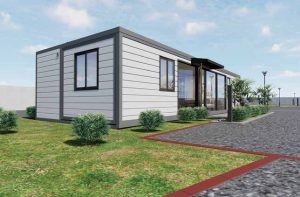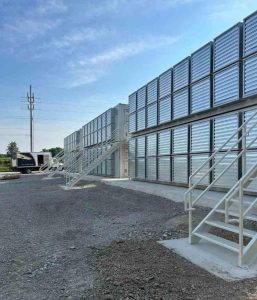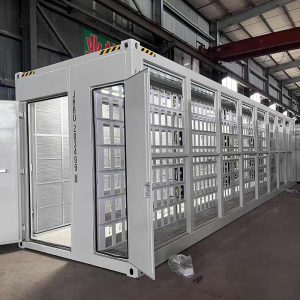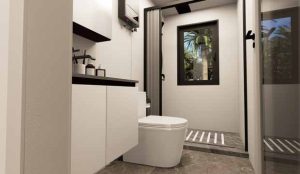Why Is Safety Vital in Container House Installation?
What Risks Arise During Container Home Setup?
Setting up a container house, especially an expandable shelter container, involves heavy equipment, electrical work and structural parts. These create safety hazards. Risks include crane mishaps during lifting, cuts from sharp steel edges, electric shocks from wiring and structural collapse if units aren’t secured properly. Uneven ground or bad weather increases these dangers.
How Do Expandable Shelter Containers Differ in Safety Needs?
Expandable shelter containers have unique challenges. Their foldable, extendable design includes moving parts. These must be locked securely. Incorrect unfolding or extension can cause instability. It may lead to mechanical failure. The folding house design transforms into a livable space quickly. But speed must not compromise safety. Proper training on expansion mechanisms prevents accidents.
Why Prioritize Safety From the Planning Stage?
Safety planning starts before any work begins. Assessing the site, calculating loads and planning logistics are key. These steps avoid accidents during setup. Early safety measures ensure compliance with rules. They also reduce costly delays or injuries later.
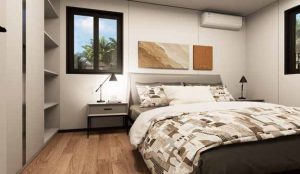
Preparing the Site for Safe Installation
What Site Conditions Should Be Checked Before Installing an Expandable Shelter Container?
Before placing a container house, especially expandable models, a thorough site check is needed. Evaluate soil stability. Check drainage capacity. Ensure access routes for cranes and trucks. Review local zoning or environmental rules.
How Do Leveling and Drainage Affect Safety?
Soil Stability and Foundation Preparation
A flat foundation keeps the expandable shelter container stable. Unstable or erodible soil can cause tilting. It may even lead to collapse. Proper drainage stops water buildup under the unit. This prevents corrosion of metal frames. It maintains structural strength over time.
Access for Cranes and Transport Vehicles
Containers arrive by truck and are lifted by cranes. Clear access paths reduce risks of vehicle rollovers. They also prevent dropped containers during unloading.
Structural Integrity and Load Management
How Can Structural Safety Be Ensured During Placement?
Place each unit on a solid foundation. Align it accurately to avoid shifting. Use anchoring systems where needed. These resist wind or seismic forces. For example, ACTBOXES’ products withstand earthquakes up to Level 8.5. They also handle typhoon winds up to 50m/s.
What Load Issues Are Unique to Expandable Shelter Containers?
Weight Distribution in Multi-Unit Setups
Expandable containers often have multiple unfolding modules. Poor stacking or alignment creates uneven weight. This leads to stress points in the structure.
Reinforcement for Stacked or Extended Units
Strengthened corners, support beams and secure locks are vital for stacking or extending units. ACTBOXES offers 20-foot, 30-foot and 40-foot expandable container houses. These are built for durability. They stay safe when fully extended.
Electrical, Plumbing and Utility Safety
What Risks Come with Utility Connections in Container Homes?
Risks include fires from faulty wiring. Water leaks can cause damage. Poorly sealed plumbing fixtures add to this risk. Gas leaks are a concern if kitchens use LPG. These require professional installation.
How Can Electrical Systems Be Safely Integrated?
Grounding Techniques for Expandable Shelter Containers
Ground all metal parts to avoid electric shocks. This is critical for mobile units in varying conditions.
Waterproofing and Insulation for Plumbing
Expandable shelters need flexible, secure plumbing due to moving parts. Waterproof materials and thermal insulation maintain comfort. ACTBOXES’ certified models work in temperatures from 22°F to 122°F.
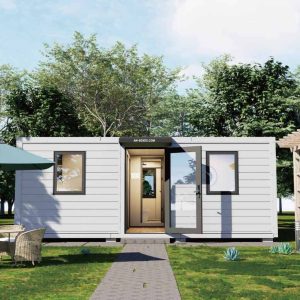
Fire Safety and Emergency Access Planning
How Should Fire Prevention Be Planned?
Use flame-retardant materials for insulation, flooring and walls. ACTBOXES products meet Class A fire standards. They suit high-risk areas like data centers or hotel complexes.
What Emergency Access Features Are Needed?
Role of Fire-Resistant Materials
Non-combustible walls slow fire spread. This is vital in remote areas with delayed emergency response.
Designing Safe Exits and Ventilation
Include multiple exit points in each unit’s design. Add natural ventilation paths. These also serve as smoke escape routes during emergencies.
On-Site Worker Safety Protocols
What Protective Gear Is Required During Installation?
Workers need helmets, steel-toe boots, gloves, reflective vests, eye protection and harnesses for heights. This gear reduces injury risks during crane work or welding.
How Can Teamwork Reduce On-Site Accidents?
Training on Expandable Shelter Container Features
Workers must know how components like hydraulic arms or locking pins work. This prevents mishandling injuries.
Using Checklists and Supervision
A checklist ensures all steps are followed, from unloading to final checks. Qualified supervisors oversee the process.
Introducing ACTBOXES Expandable Shelter Containers
Who Is ACTBOXES?
Founded in 2013, Shenzhen Anchengtong Container Service Co., Ltd., known as ACTBOXES, creates innovative container housing. We offer customized designs. Our products include shipping container houses, expandable units, data centers and modular hotels.
Key Features of ACTBOXES Expandable Shelter Containers
Our products have excellent soundproofing (≥40db) and thermal insulation (22~122°F). They resist earthquakes (Level 8.5) and typhoons (50m/s). They deploy quickly and offer customizable layouts. These suit homes, cafes, or offices.
Durability, Mobility and Easy Setup
The 20-foot Container Extension Room Trailer Version is highly mobile. Our 30-foot and 40-foot Expandable Container Houses provide spacious interiors. They remain portable for urban or remote use.
Why Choose ACTBOXES for Modular Housing?
Pre-Assembled Units Reduce On-Site Risks
Our factory pre-assembles units. This cuts on-site labor time. It lowers risks compared to traditional building methods.
Meeting Global Safety Standards
Our marine-grade steel structures are CSA certified. They meet strict North American building codes. This shows our commitment to quality.
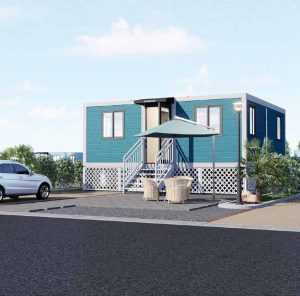
FAQ
Q: Do I Need Special Permits?
A: Yes. Local rules may require zoning approval.
Q: Can These Homes Handle Extreme Weather?
A: Yes. They resist Level 8.5 earthquakes and 50m/s typhoon winds.
Q: Are These Homes Energy-Efficient?
A: Yes. They include thermal insulation. Optional solar integrations are available.
Q: Can I Relocate My Home Easily?
A: Yes. Trailer-mounted versions allow quick moves.
Q: Are Plumbing and Electrical Systems Pre-Installed?
A: Most models have basic systems. Customization is available on request.

